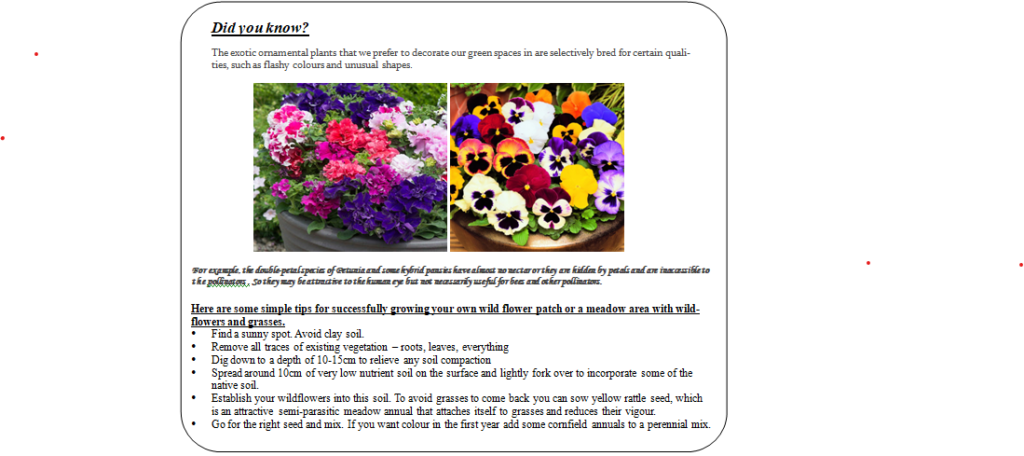Sanghamitra Das Mondal
Program coordinator, Europe
The Celestial Earth
Pollinators are major part of crop associated biodiversity , and provide important ecosystem services to both natural and agricultural ecosystems. Our lookout on pollinators in the INTERNATIONAL BIODIVERSITY DAY, 2023.

Spring flowers such as crocus, bluebells and forget-me-nots can provide an early source of nectar for bees emerging from their winter nests. Bees find it particularly easy to distinguish the colour purple, and many of their favourite flowers are of this hue
(Credit: Getty Images)
For thousands of years, pollinating insects have played a crucial role for us and the planet: with their tireless work they protect biodiversity and along with it our health. Recent perils of climate change along with loss of habitat, poor nutrition and pesticide exposure are killing our bees, butterflies and other pollinators.
This giant insect workforce pollinate about three-quarters of our crops. Their sharp decline have resulted in 3%-5% loss of fruit, vegetable and nut production. It’s a complex crisis as poor nutrition is leaving these insect pollinators vulnerable to pesticides and parasites. There are simple steps we can all take to stop this quiet catastrophe. Our conscious effort to plant pollen and nectar rich plants in our green spaces could get our world buzzing again. This would include the rural pastures as well as urban landscapes and our gardens.
The precious wild flowers that are woven through history could support our bees, butterflies and pollinating insects with a rich variety of pollen and nectar. There’s no doubt that wildflowers are exceptionally beautiful and we can have them in incredible, joyous abundance once they are incorporated. They’re remarkably tough and are totally adapted to our native land and climate.
Modern agriculture has transformed our countryside to meet our demands of food. It’s now estimated that there is loss of a staggering 98% of our wildflower rich habitats from before since we’ve started to rely on pesticides and herbicides. Many scientists and conservationists now believe that these two factors are making it hard for our wildflowers and our pollinating insects to survive.
It’s a strange feeling now walking through wheat fields. When we pass by some crop field from a distance we feel they are beautiful productive land but then if you actually stop and stand in a place like this there’s just not a single bee, a hover fly or a butterfly and it’s because there are no wild flowers. Before herbicides and pesticides we would have had corn field weeds such as corn poppies and corn cockle and marigolds and lots of splashes of colour. Now it’s really like a wildlife desert out there.
But why should we care if our countryside isn’t full of flowers and buzzing with honey bees, bumble bees and pollinating insects. Does it really affect the majority of us that live in towns and cities? It does eventually. Most of the fruits and vegetable that we consume on a daily basis are dependant on these pollinators for their natural growth and propagation.
According to Prof David Goulson, at the University of Sussex, in the UK, “Globally, we consume too much of the wind pollinated crops – wheat, rice, corn, barley – which are rich in carbs but relatively low in nutrients, leading to an epidemic of obesity and diabetes around the world. We do not eat enough fruit and veg, most of which requires insects for pollination – think apples, cherries, strawberries, squash, beans, tomatoes etc.”
A recent study published in the journal of Environmental Health Perspectives shows the global loss of pollinators is already causing about 500,000 early deaths a year by reducing the supply of healthy foods.The researchers considered deaths from heart disease, stroke, diabetes, and some cancers, all of which can be reduced with healthier diets. The study is the first to quantify the human health toll of insufficient wild pollinators.It was based on data from hundreds of farms across the world, information on yields and diet-related health risks and a computer model that tracks the global trade in food.
The researchers found the biggest impact was in middle-income countries, like China, India, Russia and Indonesia, where heart disease, strokes and cancers were already prevalent due to poor diets, smoking, and low levels of exercise. In rich nations, more people could still afford to eat healthily even if the price of the foods went up due to lower production, although the poorer people in those countries would still suffer.
The most concerning aspect of this study is that, since insect populations are continuing to decline, this lost crop yield is going to get worse into the future, while the human population is going to continue growing to at least 10 billion. The problems described here are likely to get much worse as the 21st century progresses.
But there is a solution out there in pollinator-friendly practices. These include increasing flower abundance on farms, cutting pesticide use, especially neonicotinoids, and preserving or restoring nearby natural habitats.So why don’t we adapt our age old ways and encourage the pollinators by increasing the biodiversity and native plant covers. It will take a bit of time but conscious decision and effort will help mankind, other living beings and Mother Nature in the long run.



